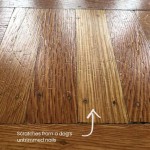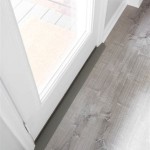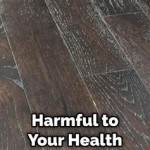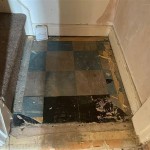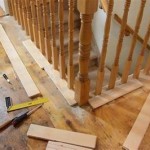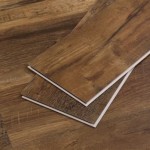Can You Use Gel Stain On Laminate Flooring?
Laminate flooring, a popular choice for its affordability and durability, often mimics the appearance of hardwood. However, unlike hardwood, laminate features a photographic layer covered by a protective wear layer. This construction significantly impacts the refinishing options available, particularly regarding staining. The question of whether gel stain can be successfully applied to laminate flooring is a complex one, dependent on understanding the materials involved and the desired outcome.
Traditional wood stains penetrate the porous surface of natural wood, altering its color. Gel stains, while still coloring agents, differ significantly in their application and composition. They contain a thicker consistency and are designed to sit on the surface, making them potentially suitable for non-porous materials like laminate. However, the inherent properties of laminate flooring present several challenges, necessitating careful consideration before attempting to stain.
This article will explore the viability of using gel stain on laminate flooring, delving into the characteristics of laminate and gel stain, the potential issues that may arise, and the processes involved in undertaking such a project. It will also discuss alternative methods for altering the appearance of laminate floors, offering a comprehensive overview for individuals considering this type of renovation.
Understanding Laminate Flooring Construction
Laminate flooring is a multi-layered synthetic flooring product. Typically, it consists of four main layers. The bottom layer, known as the backing layer, provides stability and moisture resistance. Above this lies the core layer, usually made of high-density or medium-density fiberboard (HDF or MDF). This core provides the flooring's structural integrity and resistance to indentation. The decorative layer, positioned above the core, is a photographic image of wood, stone, or other materials. Finally, the wear layer, a transparent protective coating, sits atop the decorative layer, safeguarding it from scratches, fading, and other damage. This wear layer is typically made of melamine resin or aluminum oxide.
The presence of the wear layer is the primary obstacle to staining laminate flooring. This layer is designed to be impervious to liquids and resistant to abrasion, preventing any stain, including gel stain, from penetrating the surface. Consequently, the stain will not absorb into the laminate; instead, it will remain on the surface, potentially creating an uneven or blotchy appearance. Adhesion issues can also arise, as the gel stain may not properly bond to the slick surface of the wear layer, leading to peeling or chipping over time.
Therefore, the success of applying gel stain to laminate flooring largely depends on the preparation of the surface and the characteristics of the wear layer itself. Some older laminate floors may have a less robust wear layer, potentially allowing for some keying or adhesion. However, modern laminates are typically highly resistant, making successful staining significantly more challenging.
The Properties of Gel Stain and Its Application
Gel stain differs from traditional wood stain in several key aspects. Traditional stains penetrate the wood pores, altering the color from within. Gel stain, on the other hand, is a thick, viscous product that sits on the surface. This makes it suitable for non-porous surfaces like fiberglass, metal, and, in theory, laminate. Gel stain contains binders and pigments that provide color and adhere to the surface. Its thicker consistency allows for better control during application, reducing the risk of drips and runs, particularly on vertical surfaces.
The application of gel stain typically involves several steps. First, the surface needs to be thoroughly cleaned and degreased to remove any dirt, oil, or wax that could interfere with adhesion. Light sanding may be required to create a slightly rougher surface for the gel stain to grip onto. However, sanding laminate flooring is risky, as excessive sanding can damage or remove the wear layer, exposing the photographic layer beneath. Once the surface is prepared, the gel stain is applied using a brush, rag, or foam applicator, ensuring an even and consistent coat. Multiple thin coats may be necessary to achieve the desired color intensity. After each coat, the stain needs to dry completely, as per the manufacturer's instructions.
The primary advantage of using gel stain on laminate is its ability to color a non-porous surface. However, this advantage is counterbalanced by the potential for poor adhesion and an uneven finish. Because the gel stain does not penetrate the laminate, it is susceptible to scratching and peeling, especially in high-traffic areas. The finish may also appear artificial or painted, lacking the natural depth and grain character of stained wood.
Potential Issues and Considerations
Several potential issues can arise when attempting to use gel stain on laminate flooring. The most significant is the lack of adhesion. The smooth, non-porous surface of the wear layer provides little for the gel stain to grip onto, leading to peeling, chipping, and scratching. This is especially problematic in high-traffic areas where the floor is subjected to constant wear and tear.
Another concern is the uneven application of the gel stain. Because the stain sits on the surface, any imperfections in the application will be readily visible. Streaks, brush marks, and blotches can detract from the overall appearance, resulting in an unsatisfactory finish. Achieving a uniform color and consistent sheen can be challenging, even for experienced DIYers.
Furthermore, the durability of the stained laminate floor is questionable. Even with proper surface preparation and careful application, the gel stain is unlikely to provide long-lasting protection. The stain may wear away over time, especially in areas that are frequently cleaned or exposed to moisture. Regular maintenance and touch-ups may be required to maintain the appearance of the floor, adding to the overall cost and effort.
Before attempting to stain laminate flooring, it is crucial to consider the potential risks and drawbacks. It is advisable to test the gel stain on an inconspicuous area of the floor or on a spare piece of laminate to assess its adhesion and appearance. If the test results are unsatisfactory, alternative methods for altering the floor's appearance should be explored.
Sanding the laminate presents a significant risk. While it might seem like a solution to improve adhesion, sanding the wear layer too aggressively can damage it irreparably, exposing the photographic image. This exposure renders the floor highly vulnerable to damage and significantly shortens its lifespan. Therefore, sanding, if attempted at all, should be done with extreme caution using very fine-grit sandpaper and minimal pressure.
Alternative Solutions for Altering Laminate Flooring Appearance
Given the challenges and potential drawbacks of using gel stain on laminate flooring, alternative methods for altering its appearance should be considered. Painting laminate flooring is one such alternative. While also requiring careful surface preparation, specialized paints designed for laminate can offer better adhesion and durability compared to gel stain. Prior to painting, a bonding primer specifically formulated for non-porous surfaces should be applied to ensure proper adhesion.
Another option is to use vinyl flooring over the existing laminate. Vinyl flooring comes in a wide variety of colors, patterns, and textures, including options that mimic hardwood or tile. It is relatively easy to install and provides a durable, waterproof surface. Vinyl flooring is also a less permanent solution, as it can be removed or replaced if desired.
Replacing the laminate flooring altogether is the most drastic, but also the most reliable, solution. This allows for a complete transformation of the room's appearance and ensures a consistent and durable finish. While more expensive than staining or painting, replacing the flooring provides the opportunity to choose a material that better suits the homeowner's aesthetic preferences and functional needs.
Another emerging trend is the use of specialized floor refinishing products designed specifically for laminate. These products often involve a multi-step process that includes cleaning, priming, and applying a durable topcoat. While still relatively new to the market, these products offer a potential alternative to traditional staining or painting, providing a more long-lasting and aesthetically pleasing finish.
Ultimately, the best approach for altering the appearance of laminate flooring depends on the homeowner's budget, skill level, and desired outcome. While gel stain may seem like a quick and inexpensive solution, the potential risks and challenges should be carefully considered. Exploring alternative methods may provide a more reliable and satisfying result in the long run.

How To Easily Use Gel Stain On Existing Stained Wood Designed Decor

How To Stain Laminate Flooring 2 Easy Ways

How To Refresh Wood Floors Using Gel Stain Real Homes

Gel Stain Laminate Floor Painting Floors Flooring Home Maintenance

How To Stain Laminate Flooring 2 Easy Ways

Update Stairs With Gel Stain So Simple Artsy Rule

All You Need To Know About Gel Stain Vinawood

Helpful Gel Stain Tips Tricks For A Perfect Finish Average But Inspired

How To Stain Laminate Flooring 2 Easy Ways

Gel Stains An Easy Way To Control Wood Blotching And Do Other Cool Stuff Baton Rouge Woodworking Club
Related Posts

